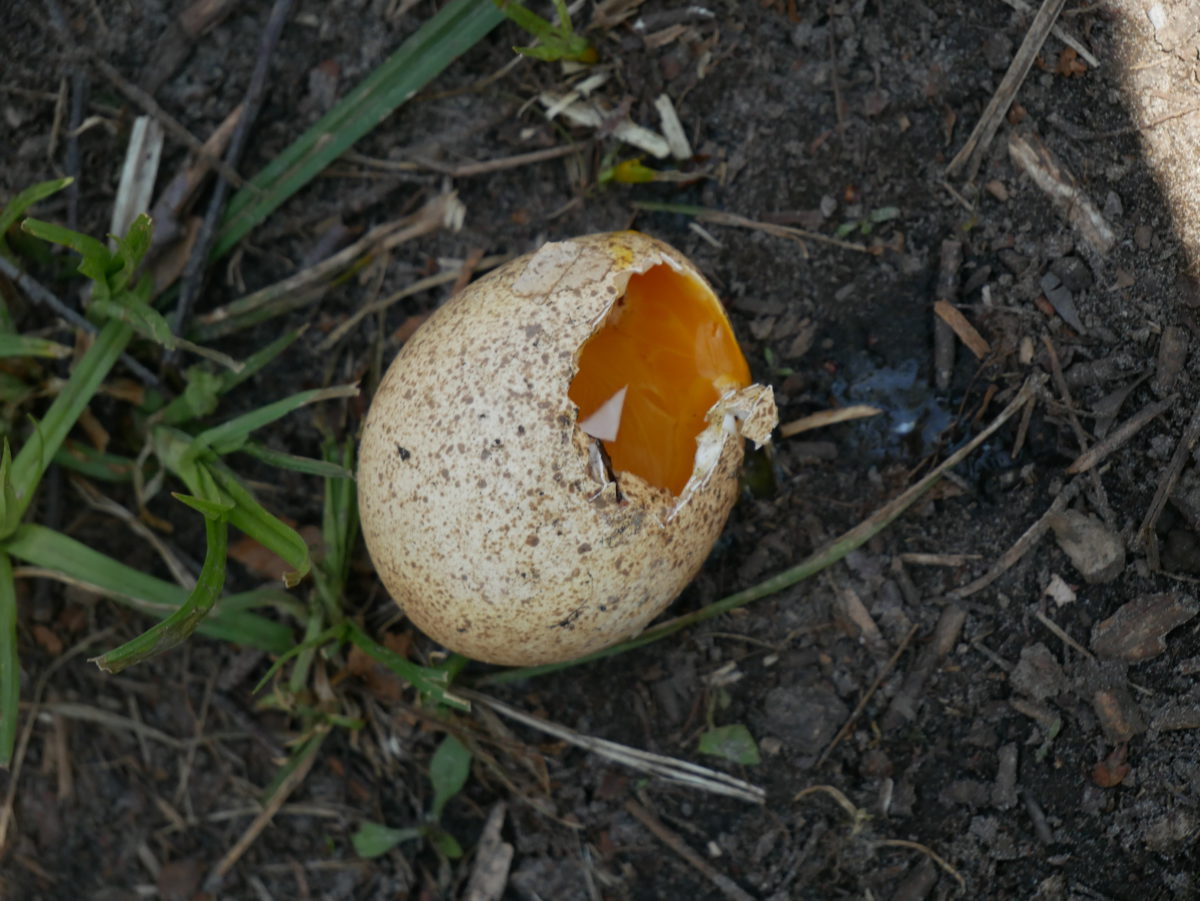Eggbert is an unhatched baby chicken. Or maybe he’s an unhatched baby rooster. “His” or “hers” exist in our world, not Eggbert’s. Eggbert’s is the story of a fertilized egg growing into a chick embryo, then a chick.
Eventually the unhatched chick starts to peck its way out of its eggshell prison, into a new world. First came a feeling. Eggbert’s little mind identified that feeling as negative. If it could talk, it would have said: “OMG! I’m suffocating!” It felt a negative feeling and was motivated to peck.
Why peck? Where did the urge to peck come from?
Eggbert’s life is just beginning. Today is his first day. For Eggbert, there was no previous day wherein he learned how to peck. The urge to peck came from his survivor mind. The urge to peck, triggered by the feeling of suffocation, came from Eggbert’s instinctive mind without him having learned it. Somehow, it was embedded in his little unhatched mind. Does his urge to peck come from a code in his DNA? I hope not. Because his DNA is actually his mothers and fathers DNA. Then again, both his mother and his father had the same urge when they were little unhatched chicks. Eggbert’s body is a manifestation of the union of their bodies, of their DNA. His DNA does not exist in a vacuum in and of itself: his mother and father have the same DNA and, if there is a code, they have the same code. Eggbert’s urge to peck must come from his species. No. It’s broader than that – it comes from the biological class “birds.” No, it’s broader than that. Reptiles. Birds and reptiles: all birds and all reptiles emerge from eggs because of this urge to peck, triggered by a feeling of suffocation. If Eggbert’s “pecking code” is embodied in his genetics, then the same code must be embedded in the DNA of all birds and all reptiles who exhibit the same behaviour. If there is a code, it may be possible to find it. Just because no-one has found it yet, doesn’t mean it doesn’t exist. But, in fact, no-one has found any such “get-the-peck-outta-here” code. The code’s existence is only an idea, unsupported by evidence.
We are examining the life of a tiny chick embryo whose little life has gone from zero consciousness through a sequence of unknown conscious experiences, to an urge to peck its way out of its shell. We are examining this process slowly and intelligently, in detail, in hopes of learning something about consciousness.
Side bar: When we do that slow, deliberate contemplation in meditation, seemingly out of nowhere, a realization will come. That realization is the subject of my next book: “The Big Bam.” Realizations are experiences of both the intellect and the emotions, simultaneously. The process of contemplative meditation involves slowing down our monkey mind and using logic, words and numbers to ponder some concept. We slow the mind down until the words and numbers vanish. (Don’t worry our intellect does not disappear; however, our conceptual mind will disappear. This disappearance opens the door for the realization.) We can train our own minds to get better and better at both contemplating and realizing. For us humans, meditation is all about training the mind.
Eggbert has a mind. It is unlikely that its little mind is trained at all when it’s still inside the egg. So far, all we can deduce from our observations is its behaviour: he’s pecking like hell to get out of his shell. And we infer that he is motivated by a feeling of suffocation. And we wonder how or when it learned that behaviour.
At first, Eggbert was a one-celled creature with no brain, no muscles, no skeleton, and no organs. Just one cell. Now he is an active baby chick pecking for his life. Somewhere in the few weeks from his conception to happy hatch-day, Eggbert evolved from an unconscious being to a conscious being. How?
You and I did the same thing. How?
Biologists have mapped out the step-by-step stages of Eggbert’s physical changes, but have difficulty with the concept of consciousness. When did consciousness arrive? Where did it come from? What is consciousness?
Most of the studies I’ve seen examine the brain, neural pathways and brain biochemistry. They maintain that our experience of consciousness rises from the atoms and molecules of the brain and nervous system. Most of the work in this area is done by medical researchers hoping to restore normalcy to abnormal occurrences in their patients’ lives. I admire their noble motive and hope they are successful in helping their patients reconstruct their lives after a stroke or head injury. For medical professionals, it seems important to reconstruct or normalize the neural and chemical bits and pieces of the human brain. I wonder if their efforts are applicable beyond the limits of medicine based on drugs and surgery. The presence or absence of serotonin in someones brain seems unlikely to create peace on earth.
For now, let’s content ourselves with asking questions about consciousness. What is it? When did mine start? Where did it come from? Eggbert definitely has a tiny mind and he definitely did not have one a few weeks ago. We can observe his body’s development, but not his mind’s.
KennyDN www.kennydn.com
